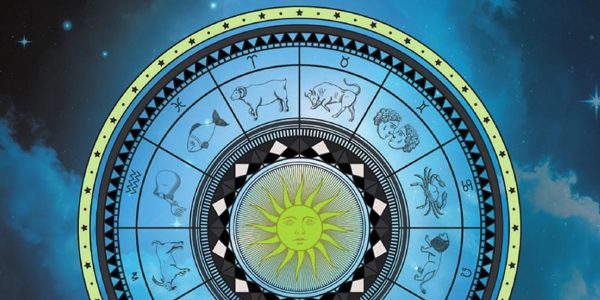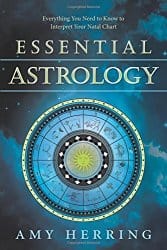
 Essential Astrology: Everything You Need to Know to Interpret Your Natal Chart, by Amy Herring
Essential Astrology: Everything You Need to Know to Interpret Your Natal Chart, by Amy Herring
Llewellyn Worldwide, 978-0-7387-3563-4, 382 pp., 2016
If there were a required textbook for beginning astrology students, Essential Astrology would be it. In more than a dozen years of study and reading — including two years as an online editor for a leading astrologer — I’ve never come across anything that gives you the feel for it as well as this book does.
To do astrology well, you need to move beyond rote memorization of signs, symbols, and terminology into relationship, intuition, and nuance — the stuff of the real world. Author Amy Herring not only explains the mechanics of the natal chart, the heart of astrology, but in an easy-to-understand style exposes the psychological layers beneath and within the chart that informs one’s lived experience.
Astrology is a symbolic language expressing the potential of a human life. To achieve this, it uses a combination of relationships between the meanings of planets, signs, and houses in a natal chart, which depicts these at the time and location of birth. Herring uses the construction of a basic English sentence to explain the astrological “grammar” that the chart uses to “speak.” This metaphor, which wrangles astrology’s inherent complexity into a form a beginner can use, brought it all home for me after all these years. Anyone who speaks English can understand this, and that simplicity is the key that opens the astrological door.
I found myself going back to that metaphor again and again as I moved deeper into the book. Despite the astounding amount of information contained in Essential Astrology, as long as I returned to the English sentence metaphor I felt I had my bearings. And as with any textbook, one trip through is not enough. Be prepared to return to it as you work through your natal chart. This book is made for dog ears and notes in the margin.
Herring divides the book into three sections. Section One is the “History and Astronomy of Astrology,” in which she explains what astrology is, how it is related to astronomy, what the natal chart map consists of and how to read it. Section Two, “Astrological Meanings,” defines the planets, the moon’s nodes, the signs, and the houses. Section Three, “Chart Interpretation,” explains the basics and more advanced techniques of interpretation, aspects, chart themes, troubleshooting the chart, tips and tricks, and an example using Steve Martin’s chart, which was compared to a recent autobiography to see how the interpretation fared.
Essential Astrology doesn’t take the keyword approach to astrology. In fact, Herring deconstructs many of the keywords associated with planets, signs, and houses, telling us,
it may not be that they are incorrect, but that they have been misunderstood…By tracing some of the literal or less obvious keywords back to the planet, sign, or house they are associated with, it becomes more evident how those keywords became associated with the essence of the planet, sign, or house, rather than being literal or flat descriptions to be applied to a person.1
Herring introduces the concept of archetypes — another use of essence instead of literalness — when describing the signs, with one or two key concepts for each. This lifts the burden of memorization in favor of intuition and feeling when learning what that sign is all about, and later, how it relates to the planets, houses, and the entire natal chart. For instance, in describing Scorpio, Herring writes:
If we understand that one of the core truths of Scorpio lies in the need to experience life in the deepest way possible, we can understand that a Scorpio might be prone to going to extremes … Many keywords and behaviors commonly assigned to Scorpio embody this one core truth, and if we understand it, we can make our own keyword list at any moment, one that fluidly draws on the root of the sign, rather than memorize a collection of flat and seemingly disconnected personality traits.2
I have only one criticism of Essential Astrology: it doesn’t have an index. Any book explaining a field so heavily reliant on terminology needs one. On several occasions I wanted to explore where a term might have relationship with another and I couldn’t for lack of an index. There is a well-stocked glossary, recommended reading and resources, and where to get a copy of your natal chart, all useful. But in a second printing, I would hope the publisher includes an index.
Notwithstanding that small flaw, what lies in Essential Astrology really is essential to astrology. Each topic Herring discusses has had other books written about it, yet she supplies enough basic and thought-provoking information that you could work for years on natal charts without reading any of them. If and when you do, you’ll be well prepared.








